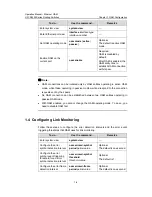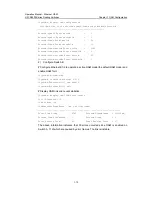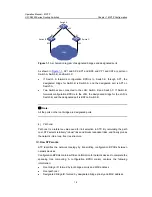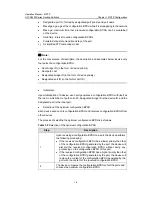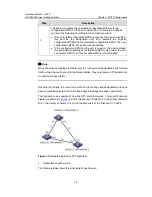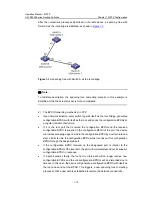
Operation Manual – MSTP
H3C S9500 Series Routing Switches
Chapter 1 MSTP Configuration
1-5
Note:
Rules for configuration BPDU comparison:
z
The configuration BPDU that has the lowest root bridge ID has the highest priority.
z
For configuration BPDUs with the same root bridge ID, they will be compared by
their root path costs. If the root path cost in a configuration BPDU plus the path cost
corresponding to this port is S, the configuration BPDU with the smallest S value
has the highest priority.
z
For configuration BPDUs with the same root bridge ID and the same root path cost,
they will be compared by their designated bridge IDs, then their designated port IDs,
and then the IDs of the ports through which they are received. The smaller the ID,
the higher the message priority.
z
Selection of the root bridge
At network initialization, each STP-compliant device on the network assumes itself to
be the root bridge, with the root bridge ID being its own device ID. By exchanging
configuration BPDUs, the devices compare one another’s root bridge ID. The device
with the smallest root bridge ID is elected as the root bridge.
z
Selection of the root port and designated ports
The process of selecting the root port and designated ports is as follows:
Table 1-3
Selection of the root port and designated ports
Step
Description
1
The root port is the port through which the optimum configuration BPDU
was received.
2
Based on the configuration BPDU and the path cost of the root port, the
device generates a designated port configuration BPDU for each of the
rest ports as follows:
z
Using the root bridge ID of the configuration BPDU of the root port as
the root bridge ID.
z
Using the sum of the root path cost of the configuration BPDU of the
root port and the path cost corresponding to the root port as the root
path cost.
z
Using the local device ID as the designated bridge ID.
z
Using the local port ID as the designated port ID.




